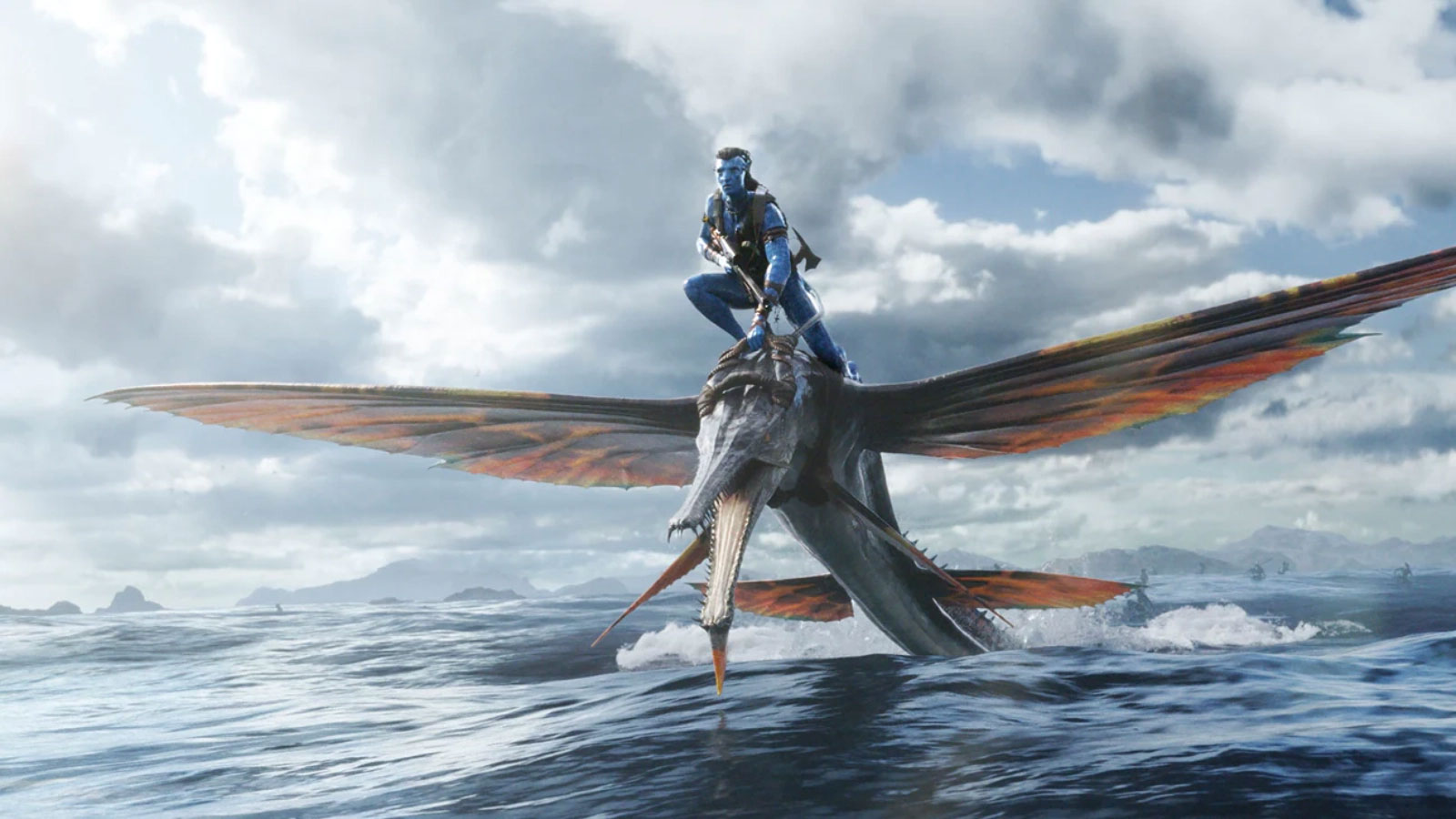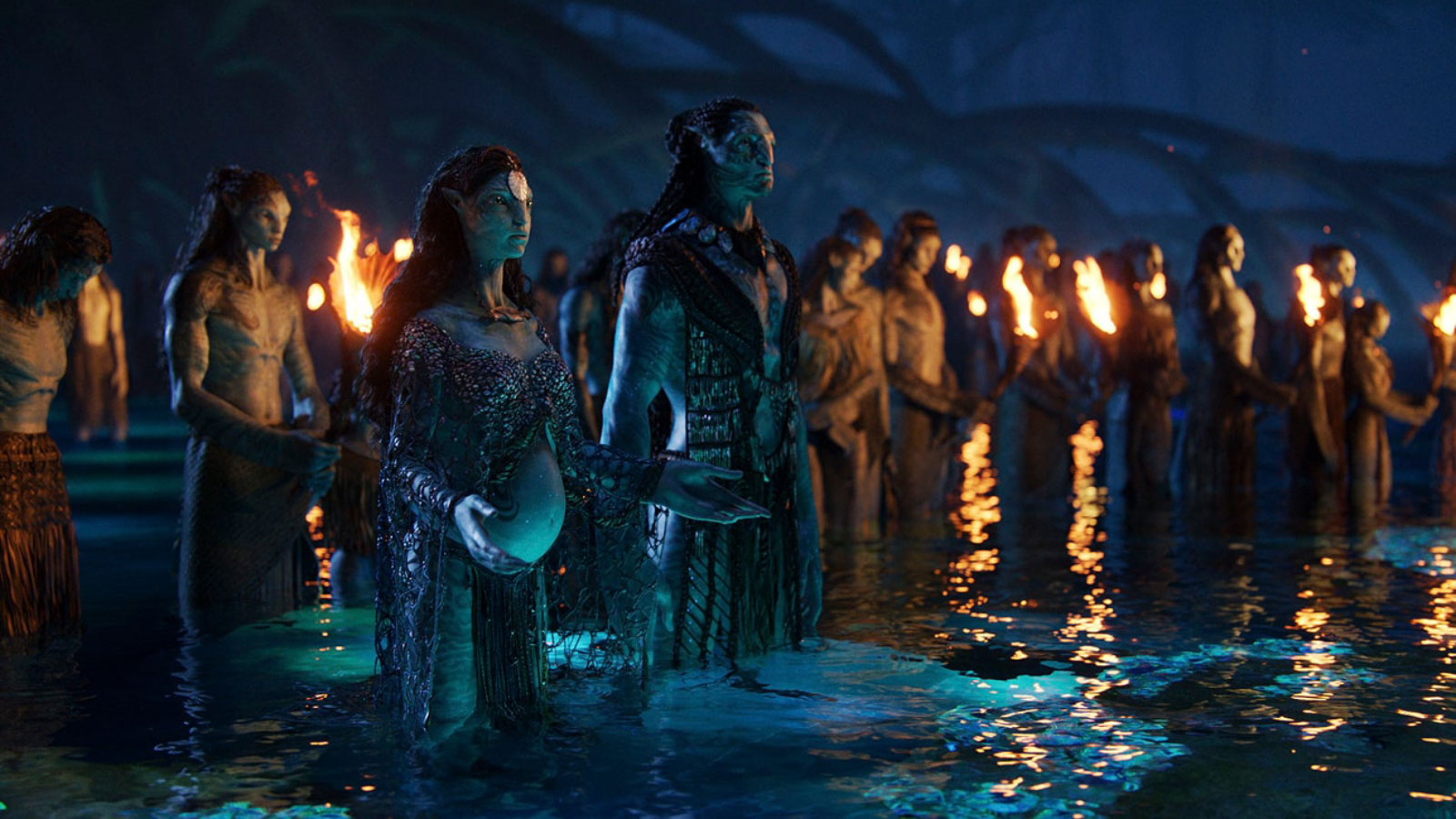If you want to see some examples of actual Indigenous futurism filmmaking, may I suggest you look somewhere besides James Cameron?
There’s the Cree-Metis’ filmmaker Danis Goulet’s recent Night Raiders or the late Mi’kmaw filmmaker Jeff Barnaby’s extremely timely last film, Blood Quantum, released for streaming near the beginning of the COVID pandemic.
Both of those films look at and reframe Indigenous history through an Indigenous perspective: boarding school trauma in the case of Night Raiders and the unique relationship Indigenous people have with foreign disease (think smallpox) in the case of Blood Quantum. Both films speak to issues that affect and have affected Indian Country.
If you want to see a white man’s version of an Indigenous futurism film, however, then the local multiplex showing Avatar: The Way of Water is the way to go.
That said, the plot of what some call Avatar 2 is simple enough: the Earth is dying, humans need resources, and this requires a complete takeover of the planet Pandora, which also requires the “taming” of the Indigenous inhabitants, the Na’vi.
Former Avatar and now transformed into a full Na’vi, Jake Sully (Sam Worthington) and family are driven out of their homelands by Sully’s former military colleague Quaritch (Stephen Lang), who’s also gone full Na’vi and is set on revenge. Sully is intent on protecting his family from further danger. Why is he running? Is it white guilt? He claims it’s to protect his Indigenous clan, yet his wife Neytiri (Zoe Saldana) wants to fight.
The Sully family fly far out to sea where they meet Tonowari (Cliff Curtis), the chief of the Māori-inspired Metkayina clan. The Metkayina are slow to accept them in their territories (the Sullys can’t swim well and their tails are too small) yet eventually take the Sullys in as one of their own and in time will join together in the fight against the approaching earth intruders, the Sky People.
Cameron’s latest is a curious mixture of surface Indigeneity signified from a white man’s perspective: long braids and dreadlocks attached to foreign bodies, the bodies laden with “exotic” ta moko-style tattoos. Ten-feet-tall men and women with large eyes and elfin ears are set in exotic alien locales that bring to mind fantasy artist Frank Frazetta or certain Lakota friends I’ve met. On top of all this is the connection these beings, the Na’vi, have with respect to the land and its inhabitants. It’s fantasy Indigeneity.
It’s hard not to be skeptical of Cameron’s grasp of the Indigenous material he’s appropriating here. Sure, you can make up anything you want in a fantastical tale and even have your left-leaning cake too. There are no rules to filmmaking or art in general, and if you have the funding, the world is your oyster. One can create a world where we can see white men’s myopia in regard to the environment; a story of materialism and colonialism where the consequences of a hunger and thirst for money and resources are displayed from beginning to end. Where’s the fault in that?
The fault is that James Cameron can travel the world, do the “research,” hire Indigenous film legends like Wes Studi (Cherokee) in the first Avatar movie and Cliff Curtis (Maori) and Jermaine Clement (Maori) in Avatar 2, but he can’t escape who he is: a filmmaker who told the Guardian in 2010 that his inspiration in making the first Avatar film was based on the Lakota Sioux.
“I couldn’t help but think that if they [the Lakota Sioux] had had a time-window and they could see the future … and they could see their kids committing suicide at the highest suicide rates in the nation … because they were hopeless and they were a dead-end society — which is what is happening now — they would have fought a lot harder.”
Cameron’s comments are tone-deaf, condescending, and not the kind of ally I want or need to help tell Indigenous stories. It’s one thing to read and research about a culture; it’s quite another to be of it. Perhaps that’s why there’s a boycott of the film currently underway by many Indigenous groups, one of which is led by Asdzáá Tłʼéé honaaʼéí, a Navajo artist and co-chair of Indigenous Pride Los Angeles.

The animation in Avatar: The Way of Water is visually stunning. The animals in particular — I’ll call them sea beasts and air beasts — are very lifelike, with shadows and texture, and many have souls and thoughts of their own and communicate these with the Na’vi. The concept (much like the film) walks a fine line between being corny and magical, and you just have to go with the concept, should you buy into it. One thinks if you paid the ticket to be in the theater, you’re ready to take the ride. I viewed the film as a ride, once in a 3D IMAX theater and once in a regular theater. As someone with glasses, I have to say that I think I enjoyed the film better without the 3D accouterment (also there’s less danger of smearing popcorn butter on your clunky 3D glasses).
The thesis of the film, in the midst of the various subplots, exotic character names, and Pandora versions of whales and sharks and fascinating technology, seems to be: family first. In this case it’s the Sully family fighting against the elements and their enemies to persevere on the frontier.
Sully (a Marine in his former human life) and his sons communicate to each other in military speak and it’s a bit cringey; his sons reply with “yes sir” to their father not as a sign of respect but because that’s just the way they relate to each other; they are sons in their father’s army. It’s a Sully family quirk. Is this wrong? Not necessarily, but it’s certainly jarring to hear in a family supposedly influenced by Indigenous culture.
And while not totally off topic, the poor white kid the Sully family has adopted, Spider (kind of a mix of the feral kid in Mad Max and gas station-era Justin Bieber), is often forgotten or left low on the priority list of the family. The mother practically despises him and he knows it. The lack of respect the Sully clan have for their human adoptee becomes comical as the movie progresses.
At 3 hours and 10 minutes, the film needs a more aggressive editor. Though the time in Metkayina territories provides a nice backstory, we probably don’t need to spend as much time exploring this new Na’vi version of Maoriland. I was intrigued by the updated western movie influences: trains are derailed by Comanche, er, I mean Na’vi, and pillaged for modern weaponry, the Sky people view the Na’vi as hindrances to “progress,” the Sully family is seen as dirty “half-breeds,” half sky people, half Na’vi.
A film like this takes a lot of money to make, and as such is a technological marvel. Still, I’m left wondering, what if a producer just gave a Maori-inspired project like this to an actual Indigenous filmmaker, perhaps an actual Māori filmmaker like Taika Waititi, and we had an actual Indigenous filmmaker tell the story instead of a story told through the lens of a white guy updating colonial western movie tropes? What would that look like? And why are we watching an Indigenous story again through a white man’s (3D) lens? Well, the obvious answer is James Cameron has the money to make it. But when do Indigenous people get to make something like this?
Or maybe the better question is: Is this the type of thing Indigenous people would even want to make?
There are plenty of real-life issues that affect Indigenous people in 2022. The upcoming Supreme Court ICWA decision regarding whether Indigenous adoptees get to stay with Indigenous families or not comes to mind. We have water issues (which this film ironically has nothing to do with), of course colonialism is ever-present and the fight for resources is always in play, but do we need a white guy to dress these issues up in the world of fantasy where 10-foot-tall aliens fight “hard enough” to save the day to prove that we aren’t after all a “dead-end society”? Perhaps Indigenous futurism should be left in the hands of actual Indigenous filmmakers who know and can tell these stories?
When the first Avatar came out in 2009, I actually enjoyed it. The technology was shiny and new, there were fewer Indigenous stories on film, perhaps I even asked less of the type of Indigeneity I saw on the screen; times have changed. In 2022 we had three Indigenous-led TV shows in the United States: Rutherford Falls, Reservation Dogs, and Dark Winds. Reservation Dogs alone had at least half a dozen Indigenous directors in its ranks. The time has come for Indigenous directors to re-make these westerns and continue making our own Indigenous futurism films in our own image, to flip the script, tease the tropes, put Indian before Cowboy. We have enough proven talent at this point and don’t need out-of-touch, privileged directors like James Cameron to appropriate Indigenous culture for his stories. We can tell our own stories. We tell them better.
Jason Asenap is a Comanche and Muscogee Creek writer, critic, and filmmaker based in Albuquerque, New Mexico.




